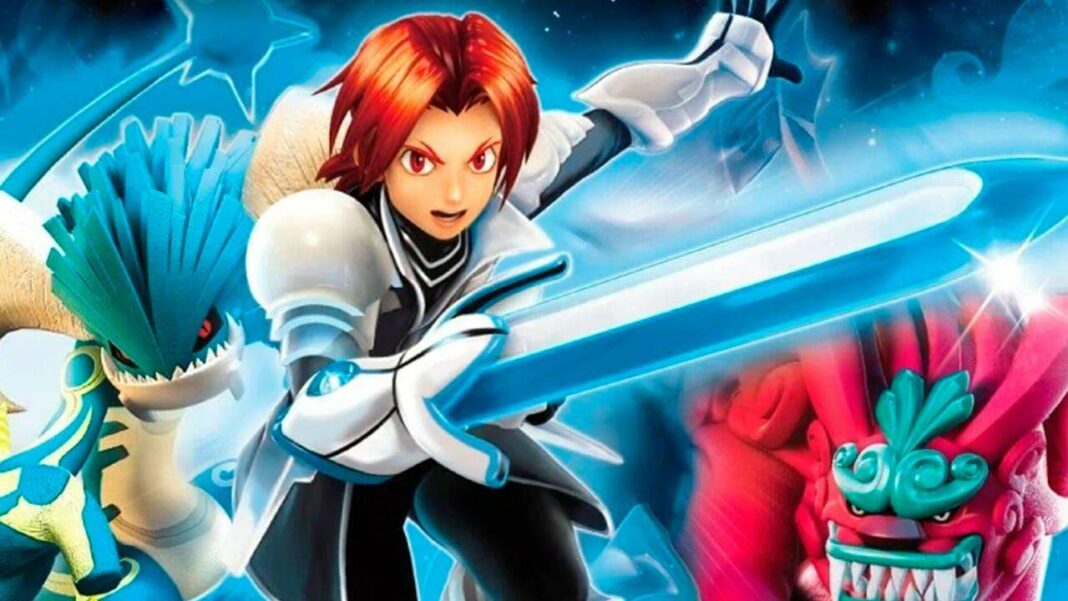A significant gap exists in the gaming market for a strong competitor to “Pokémon-inspired” titles, sparking interest in a revival of the underappreciated franchise, *Spectrobes*. Originally launched between 2007 and 2009, *Spectrobes* featured unique gameplay mechanics centered on fossil excavation and 3D action-RPG battles. Despite its potential and innovative themes, the series struggled with execution and competition. A reboot could leverage its distinct elements and capitalize on the current demand for similar games, appealing to a new generation of players.
It appears there is a significant gap in the gaming landscape. As such, I eagerly await a formidable contender—one that can rival the intriguing array of “Pokémon-inspired” titles emerging from indie developers like Cassette Beast, Nexomon, and the early access title Beastieball—to genuinely challenge Game Freak. Imagine if this rival could motivate the Japanese studio to elevate its game rather than remain complacent atop its financial throne. A potential challenger exists, provided it is given another shot: the long-forgotten Spectrobes.
Unearth the Adventure!
Launched between 2007 and 2009, the Spectrobes series comprises three titles, two on the Nintendo DS and one on the Wii. These games showcased undeniable potential, albeit one that remained largely untapped. This unique franchise marked Disney Interactive’s first original venture into gaming, breaking away from merely adapting existing properties associated with the beloved Disney brand. The series kicked off with a successful installment, paving the way for a sequel almost immediately.
Spectrobes set out to establish itself as a transmedia franchise positioned alongside Pokémon and Digimon, yet it maintained its distinct flavor. With a science fiction backdrop and adventures unfolding in outer space, the gameplay was a key differentiator. Unlike Pokémon and Digimon, which often emphasize strategic turn-based combat, Spectrobes opted for a 3D action-RPG format, even on the DS, featuring battles reminiscent of beat ’em ups.
A notable twist is the method of monster acquisition. In Spectrobes, the creatures—central to the series—begin as fossils discovered across various planets. Excavation is the core mechanic, and while it adds depth to the experience, it can also lead to repetitive gameplay. However, the fossil hunting aligns well with the exploration theme of the series, encouraging players to traverse visually and biologically rich worlds.
As players progress through the games, they encounter a diverse roster of creatures—over a hundred inspired by Japanese culture. The excavation process is initially engaging, particularly on the DS, where the console’s microphone and touch features are utilized. The challenge lies in the tedious nature of the endeavor: digging up fossils requires the precision of an archaeologist, followed by a lengthy incubation period for the creatures. Players must also gather resources to help the creatures evolve and join their team. While the concepts are intriguing, the gameplay execution could be greatly improved.
The combat mechanics invite scrutiny as well. Although Spectrobes: Origins for the Wii offers a more polished experience in terms of visual clarity and aesthetics, the battles across the series fall short of leaving a lasting impression. Despite the developers’ good intentions and ambitious vision, the Spectrobes franchise has struggled to maintain its vitality over the years.
In the Shadows of Competition
The initial two installments for the Nintendo DS were developed by Jupiter, a studio renowned for its work on the Picross series and collaborations with Square Enix on titles like The World Ends with You and Kingdom Hearts: Chain of Memories. The similarities between these games are evident, particularly in the battle systems, and despite the sequel, Spectrobes: The Gates of the Galaxy, aiming for improvement, it barely surpassed its predecessor.
It wasn’t until Spectrobes: Origins on the Wii that the series began to shine. With Genki at the helm, the game fully utilized the console’s capabilities to deliver a more immersive experience. The artistic direction, inspired by Japanese animation, brought a certain charm to the game, allowing it to express its universe more effectively.
The process of excavation, incubation, and feeding was streamlined in Origins, reducing the redundancy of the gameplay. Additionally, a space mini-game added variety during transitions between planets. Despite minor refinements, the relentless pace of production may have hindered the series overall. Nevertheless, I believe the time is ripe for Spectrobes to make a triumphant return in a fresh format.
A complete reboot or remake could breathe new life into the franchise. The recent successes of similar “Pokémon-like” titles suggest a niche waiting to be filled. With a focus on its unique elements, Spectrobes could carve out a space for itself, provided it delivers a well-crafted gaming experience. Moreover, the franchise has untapped transmedia potential; previously, books and an animated web series were produced to promote the games.
The Case for a Comeback
This franchise, inspired partly by Pokémon, revolves around exploration, capturing, and battling with monsters, and has the potential to attract a dedicated following. However, its sales figures in Japan were lackluster compared to the West, impacting its future prospects. Still, the imaginative universe crafted by its creators—featuring interplanetary travel and the extraterrestrial menace of the Krawls—remains timeless and could resonate even more strongly with audiences today.
With a closer look, Spectrobes could draw inspiration from the combat mechanics seen in Astral Chain. While Astral Chain allows players to control both the main character and a companion simultaneously, Rallen, the protagonist of Spectrobes, also engages in direct combat, albeit in a different manner. This presents an opportunity to innovate and revitalize the series.
